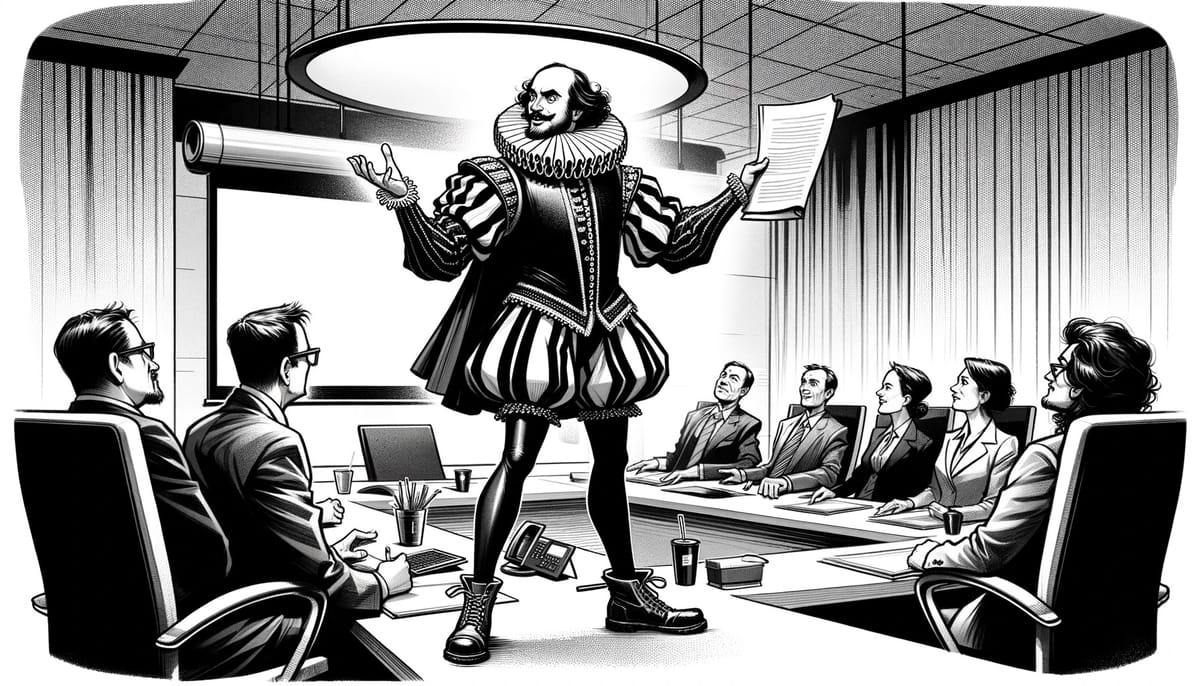Storytelling Sells Your Ideas

We’ll begin this week’s edition with a video.
I agree with Lord Tyrion. Stories are incredibly powerful. It’s not the idea that wins, it’s the narrative that cloaks the idea. The context that relates it to someone else. The vessel in which the idea is conveyed is crucial to whether the idea connects, or whether it is rejected.
I’ve learned this lesson many times in my career. When I was in my early days as an agency account executive, I thought sheer enthusiasm and the possibility my idea provided would carry the day. I had a mentor who helped me to see that equally important to the benefits of an idea were the potential pitfalls.
As I moved forward in my career and was promoted to executive leadership positions, I learned that even positing the pitfalls may not be enough. You need to understand the incentives of your audience, their predispositions, and the tradeoffs your idea will require. I think Polonius from Shakespeare’s Hamlet may have said it most beautifully:
My liege and madam, to expostulate
What majesty should be, what duty is,
Why day is day, night, night, and time is time —
Were nothing but to waste night, day, and time.
Therefore, since brevity is the soul of wit,
And tediousness the limbs and outward flourishes,
I will be brief. Your noble son is mad.
And yet, too often I see people stumbling to share their ideas. Good ideas can effortlessly get rejected when the manner in which they’re presented dilutes or distracts from the point. Here are some tell-tale signs of poor pitching:
- Your presentation has more pages than minutes in your meeting.
- You’ve written your presentation as a novel — or, you have bullet-pointed everything and there are more than three bullet points on each page.
- You pulled a Joe Friday and left all emotional resonance out
When I joined M&C Saatchi in 2014, one of the most alluring elements was the agency’s belief in “brutal simplicity of thought.” It is something that I have carried with me since, in part because I can sometimes struggle to get to the point. It’s also a highly effective way to design stories to sell ideas. The premise is:
It is easier to complicate than to simplify.
Simple thoughts enter the brain quicker and stay there longer.
Brutal simplicity of thought is therefore a painful necessity.
Let’s go through a framework for how to draft a story supporting your idea. I was inspired by my work with Amazon and the company’s simple six-pager framework. It’s a way to design your pitch or plan to land the idea quickly, and clearly, and focus on navigating people’s reactions to get the idea sold in. I call it the SMART model:
- SHORT SETUP.
- MAKE THE POINT.
- ANIMATE, ILLUSTRATE (AND ORCHESTRATE).
- ROOT IN REALITY.
- TALK IT OUT.
Short Setup
Set the scene for your audience. Don’t give an elaborate prologue, just hit the beats: we’re here to discuss X because Y is happening, and it matters in Z ways. Treat your audience like they’re intelligent, if they may not understand your idea (yet). This is especially crucial for pitching to executives; they don’t have the time or the attention span to sit through a Silmarillion of exposition to tee up a decision point.
Make the Point
Make it sharp and simple. That doesn’t mean you should “dumb it down” (that premise really irritates me, personally. If someone needs to hear something in a “dumber” fashion I question a lot more 😒… I digress). It means you should speak plainly, and clearly so that the idea can be received in your audience’s brain(s). Include the core elements: your idea, why it will work, decisions to be made and the investment (time, tools, team, and tender) to achieve the idea.
This is the ‘tear-away’ — the page you want them to rip out and walk away with once they jump on board. It’s what they can slap on someone else’s desk or attach in chat/email to give the gist to others. If you go through your story and don’t have this in 1–2 pages, go back and revise until you do.
Animate, Illustrate (and Orchestrate)
John Medina did a study found in his excellent book, Brain Rules, where he demonstrated that people remember visuals much better than text or spoken words. Visuals should always be at least two-thirds of the screen when presenting. Text on the screen should be big and bold. You don’t want people reading, you want them to see and listen. If you’re drafting a written pitch, visuals should always be included to underscore the crucial points and context supporting your idea. Animate your charts and graphs–motion pulls people's eyes towards it. Where possible, include audio to make the visual more immersive. There is a good amount of research that suggests sharing videos sound-on can break up the flow of your pitch in a good way; it shifts your audience’s focus to something new, which can act as a moment of reset when their attention needs to turn back to you.
Root In Reality
Don’t dance around the tough stuff. You’re asking your audience to make a choice, and that choice — like every other choice one makes — has consequences or tradeoffs. Further, you could be asking them to choose to go against their incentives or instincts. That is a very, VERY hard thing for most people to even consider. Cognitive dissonance and confirmation bias are powerful forces not to be underestimated. When I led digital at Monster Energy and pitched a website redesign, we underlined the need to push product-oriented content forward instead at the relative expense of lifestyle marketing. We made the point plain and upfront, and we supported it with data. It was something that I knew would meet resistance, but it showed transparency and helped to get the idea green-lit by the C-suite.
Talk It Out
Hold space for the idea to be discussed. My general rule is that at least one-third of the meeting time should be held for discussion. So if you’re presenting in a meeting that’s scheduled to run thirty minutes, you need to hold at least ten minutes for discussion. Assume people will have questions. Expect resistance. Part of your storytelling needs to be building upon your points and overcoming these negative forces. People want to feel heard. The simple act of offering people a forum and inviting feedback softens the resistance.
Prepare to retell your story a few times. Anticipate that you may have to amend it. And above all, don’t play a zero-sum game. 50% of something is better than zero percent of nothing. People who say you should hold firm to your ideas in their form are people who live a luxury of not having to compromise in life. For most of us, compromise is essential to forward progress.
Following this framework can put you in a position to accelerate the adoption of your ideas. When you value people’s time and attention as their most precious currency, and when you treat them as generally smart and capable, they tend to be more open to listening to what you have to say. That said, having the story isn’t enough. Part of the delivery is you. You need to show up in a way that will connect with your audience. You must be clear, articulate, and assertive without being arrogant or obstinate. The SMART storytelling framework helps because it distills your story down to the brutally simple truth and talking points. That means you have less to worry about retaining yourself and more space to think on your feet at the moment. This means you can be more human, and less robot… and that’s the real power in storytelling.




